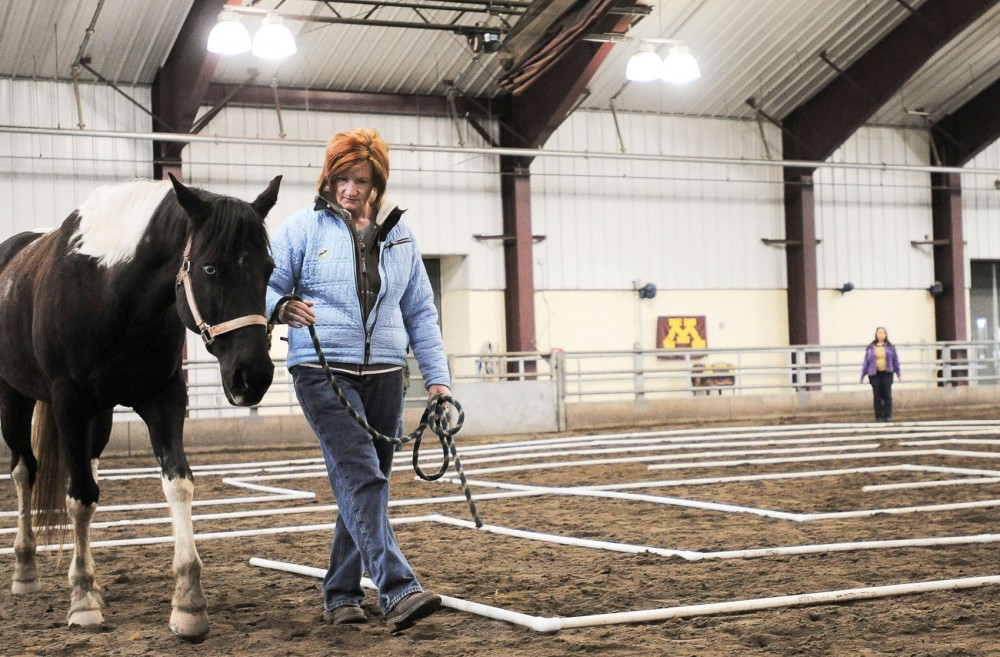Melissa Bieber quietly guided a horse through a labyrinth made of plastic pipes in a large arena at the University of Minnesota Equine Center on Saturday afternoon.
“It was amazing,” said the attorney from Becker, Minn. “When you get to the center, it’s like this peaceful, serene energy.”
The labyrinth was part of the University’s first-ever public workshop helping participants to find balance in their lives by walking through a labyrinth individually with horses.
The workshop’s name, Equusnimity, plays on the words equus — a term for horse — and equanimity.
The workshop was one of several efforts to expand University programming in animal-assisted interactions, a natural healing technique where humans work with animals to improve personal well-being, said Tanya Bailey, an AAI program specialist with the Minnesota Landscape Arboretum.
Interacting with animals can improve a person’s physical and psychological health, said Jean Larson, the Arboretum’s nature-based therapeutic services manager.
Animal interactions can lower blood pressure, heart rates and anxiety, according to the National Research Center for Women and Families.
The arboretum is also proposing an AAI research project where a dog would stay in a classroom with children who have severe behavioral disorders and autism, Larson said.
Bailey said the labyrinth at the workshop was a metaphor for finding balance.
“Horses are beings that are very in the moment,” Bailey said. “They just don’t have the same worries that we have.”
If people focus on the labyrinth and not other worries, Bailey said, it helps them stay in the moment and be self-aware.
“When we are fully present,” Bailey said. “We live a healthier life.”
Tuni Turner, a registered nurse from River Falls, Wis., said her experience walking with the horse became a partnership because they had to work together and adapt to each other.
She said she took the workshop because she’s in a major time of transition in her life.
“There’s a piece I take away that’s very personal and that I will need to reflect on for several days,” Turner said.
After walking the labyrinth, the participants carved their own labyrinths out of dinner-plate-sized slabs of clay, which will be fired and glazed.
If participants are struggling with questions or feeling anxious, Bailey said they can pick up their own labyrinths and move through them with their fingers.
“It’s a nice memento for them to have from their work through the workshop,” Bailey said.
Bailey said she hopes to expand the workshop to two days in the future so they have enough time to ride horseback through the labyrinth as well.
As she walked the labyrinth, Bieber said she had personal realizations and symbolic connections.
“It was really intense,” Bieber said. “That was a learning experience … to not have to be in control.”








